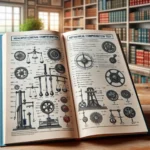The Bennett Mechanical Comprehension Test (BMCT) is a standardized assessment designed to measure an individual’s comprehension of mechanical principles. Used widely by employers in various industries, the test seeks to determine a candidate’s aptitude for mechanical reasoning and their potential to succeed in jobs where understanding and applying mechanical concepts are crucial.
**History and Purpose of the BMCT**
Developed by psychologist Harley Bennett in the late 1940s, the BMCT has been revised and updated over time to remain relevant and effective. Bennett’s aim was to provide a tool for industries to select candidates with the innate ability to understand mechanical workings and apply their knowledge practically. As mechanical reasoning is not easily taught, the BMCT’s intent is to predict performance, reduce training costs, and identify individuals capable of handling mechanical roles with less supervision.
**Test Overview and Format**
The current version, the BMCT-II, features 55 multiple-choice questions that must be completed within a 25-minute time frame. Test takers encounter a series of items that assess their understanding of physical and mechanical forces including gravity, velocity, acceleration, friction, and the function of simple machines like levers, pulleys, and gears.
Questions are formatted to challenge the examinee’s comprehension of physical laws and mechanical operations. For example, a question might show an image of a pulley system and ask which direction a rope would move when force is applied or how the movement would affect the load it supports.
**Preparation Tips for the BMCT**
Success on the BMCT hinges on a solid grasp of basic mechanical concepts and physical sciences. However, specific preparation can help candidates perform better:
1. Review Basic Principles: Refresh knowledge on physics topics, especially those related to force, energy, motion, and the operation of simple machines.
2. Practice Sample Questions: Familiarity with the test format and question style is advantageous. Practice with BMCT-specific tools or general mechanical reasoning practice tests.
3. Timed Practices: Since the test is timed, practicing under similar constraints can help you manage your pace during the actual assessment.
4. Understand Mechanical Tools: Recognize and understand the purpose and function of common mechanical tools and how they work.
5. Visual Interpretation Skills: Much of the BMCT involves interpreting diagrams and illustrations. Enhancing your spatial and visual interpretation skills can contribute to a better score.
**Who Uses the BMCT?**
The BMCT is favored across various sectors that require a team with a strong mechanical acumen. This includes the fields of engineering, manufacturing, aviation, military, transportation, and automotive industries, among others. It is often a part of the recruitment process for roles like maintenance technicians, machine operators, engineers, and any position where mechanical understanding is crucial.
**Benefits of the BMCT for Employers and Employees**
For employers, the BMCT offers a reliable way of identifying candidates with the required mechanical mindset, minimizing the risk of on-the-job errors and accidents, and aiding in predicting an employee’s performance. For potential employees, scoring well on the BMCT is an excellent way to demonstrate their mechanical reasoning prowess, setting themselves apart from other candidates and increasing their job prospects in mechanical-related fields.
**Challenges and Criticisms**
While the BMCT is a valuable tool, like any standardized test, it has its limitations. Critics argue that it may not fully capture an individual’s practical hands-on skills or their ability to learn and apply new mechanical concepts beyond the theoretical knowledge. Others point out that test anxiety or language barriers can affect performance, potentially leading to an underestimation of a candidate’s true abilities.
**Interpreting BMCT Scores**
BMCT scores are often compared to normative data compiled from a sample of the relevant job population. This allows employers to see how a candidate’s performance ranks in comparison to a typical group of current workers in similar roles. Scores are reported as raw scores, percentile ranks, or stanines, providing insight into where an individual falls on the mechanical comprehension spectrum.
**Applying BMCT in the Hiring Process**
Integrating the BMCT into the hiring process should be done thoughtfully. While it can be a powerful screening tool, employers are advised to use it as part of a broader hiring strategy that includes interviews, practical assessments, and other relevant selection procedures to form a comprehensive picture of each candidate. Doing so ensures a fair and effective recruitment process that identifies the best potential hires.
**The Future of Mechanical Comprehension Testing**
As industries continue to evolve with technology, the importance of mechanical reasoning remains. Tests like the BMCT may undergo further refinements to keep pace with the changing landscape of technical and mechanical roles. Additionally, with the rise of digital testing platforms, the BMCT might expand its reach, providing easier access and immediate results for a global pool of candidates.
**Conclusion**
The Bennett Mechanical Comprehension Test has stood the test of time as a tried-and-true measure of mechanical aptitude. It provides valuable insight into an individual’s potential to grasp and apply mechanical concepts, helping to shape a skilled and capable workforce. While preparation and understanding of the test are essential for those looking to showcase their mechanical reasoning abilities, employers must also recognize the importance of a well-rounded selection process.
In summary, while the BMCT presents a snapshot of mechanical comprehension, it should be only one piece of the puzzle in the intricacies of hiring and career development within mechanically-demanding industries. Whether you’re an aspiring technician, engineer, or an employer seeking to enrich your team, understanding and experiencing the BMCT can be a step toward a future driven by mechanical excellence.

